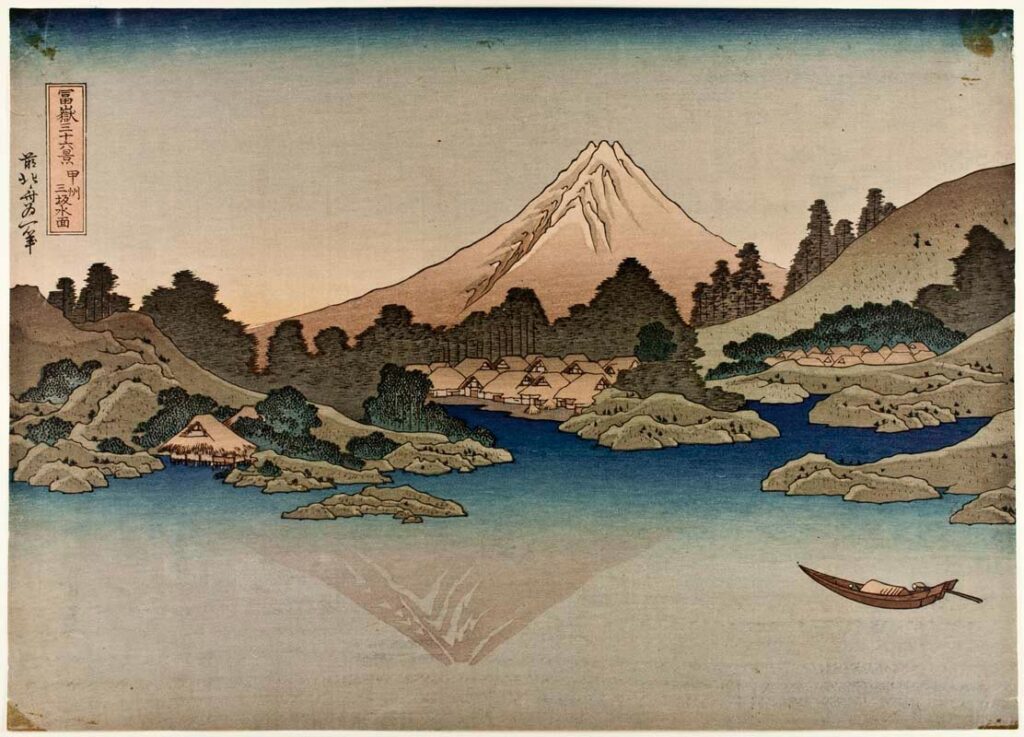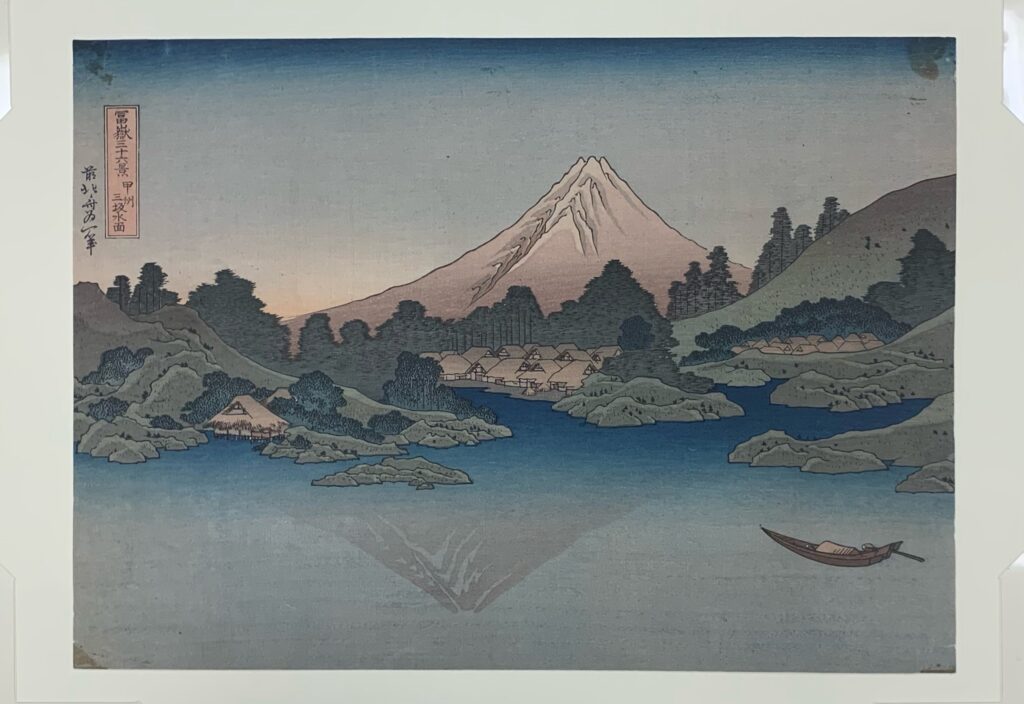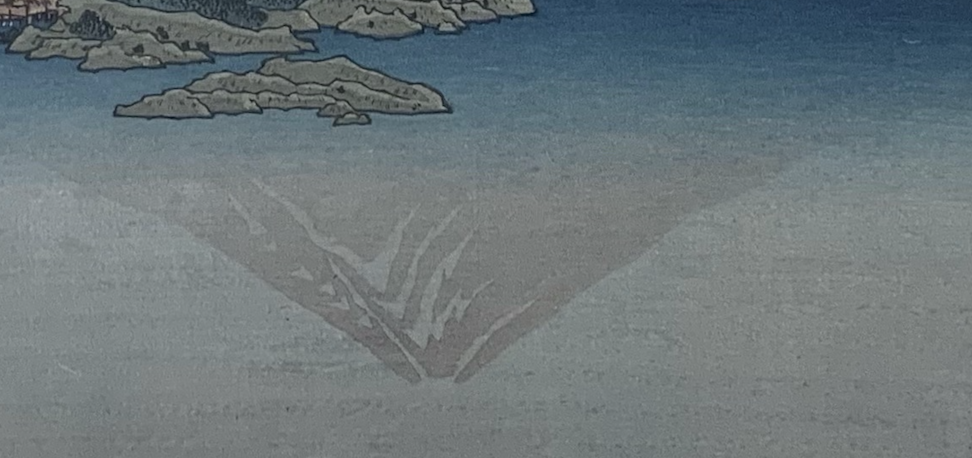


Titles: Surface of the Water at Misaka in Kai Province / Reflection in Lake at Misaka in Kai Province
Series: Thirty-six Views of Mount Fuji (Fugaku Sanjūrokkei)
Creator: Katsushika Hokusai
Date: 1829-1833
Period: Edo Period (1615-1868)
Culture: 19th Century Japan
Medium / Materials: Woodblock print made with ink and color on paper
Demensions: 25 x 35 cm
Subject: Mount Fuji Landscape
Repository: Connecticut College Caroline Black Collection of Japanese Woodblock Prints
Description: Coming from Hokusai’s Thirty-six Views of Mount Fuji collection, this print showcases a beautiful scene of human civilization living within the natural world of Japan. Light green rolling hills contrasted with deep green pine tree forests fill the middleground of the piece and give a disitivive feeling of depth to the artwork. Small village huts scour the shoreline of the calm lake which gracefully matches the composition and prussian blue shading of the sky above it. Floating peacefully in the lake, a narrow wooden boat can be seen resting in the water with its bow pointing towards a village inlet. Sitting in the background, Japan’s iconic Mount Fuji towers over the village below it and boasts a snowy white peak for all to admire. Under closer examination, the mountain’s reflection within the lake fails to align with reality’s expectations and depicts a more rugged view of the mountain that appears to be an impressional, seemingly inverted version of the mountain’s natural topography. Unique to this print, it appears as if Hokusai’s goal was to present two different views of the mountain within a single woodblock print – one view that offers the physical presence of a snow covered peak suggesting the beginnings of the cold season, and one that highlights the true beauty of the mountain’s natural rocky summit. With the tangible mountain sitting far north in the artwork, viewers are left to question if the offset reflection of Mount Fuji would ever be possible in the real world.
Comparative Analysis: Taking a closer look at the colors of the image, the painting’s prussian blue pigment used in the lake and sky can be found in countless pieces of Japanese artwork such as Hokusai’s famous Great Wave and Ukita Ikkei’s Tale of a Strange Marriage. The prussian blue color is particularly common in Japanese landscape paintings for the depiction of deep oceans, rivers, and skies and can be credited for the rise of the Aizuri-e (“blue printed picture”) genre of Japanese ukiyo-e (pictures of the floating world”) prints. Overall, the usage of this blue pigment across various pieces of historical Japanese paintings highlights the artistic importance of the color across time and mediums.
References:
Connecticut College Japanese Prints Collections Inventory
https://www.metmuseum.org/art/collection/search/54868
https://oak.conncoll.edu/visual/asian-art/Caroline%20Black%20Collection%20of%20Japanese%20Woodcuts/content/_2312112131_large.html
https://library.artstor.org/#/asset/ARTSTOR_103_41822000631943;prevRouteTS=1632680548308
https://marina-hg.github.io/iffall2017/microsite/www/aizuri-e.html
https://www.metmuseum.org/art/collection/search/45434
http://diluo.digital.conncoll.edu/Asianart/image/tale-of-a-strange-marriage/